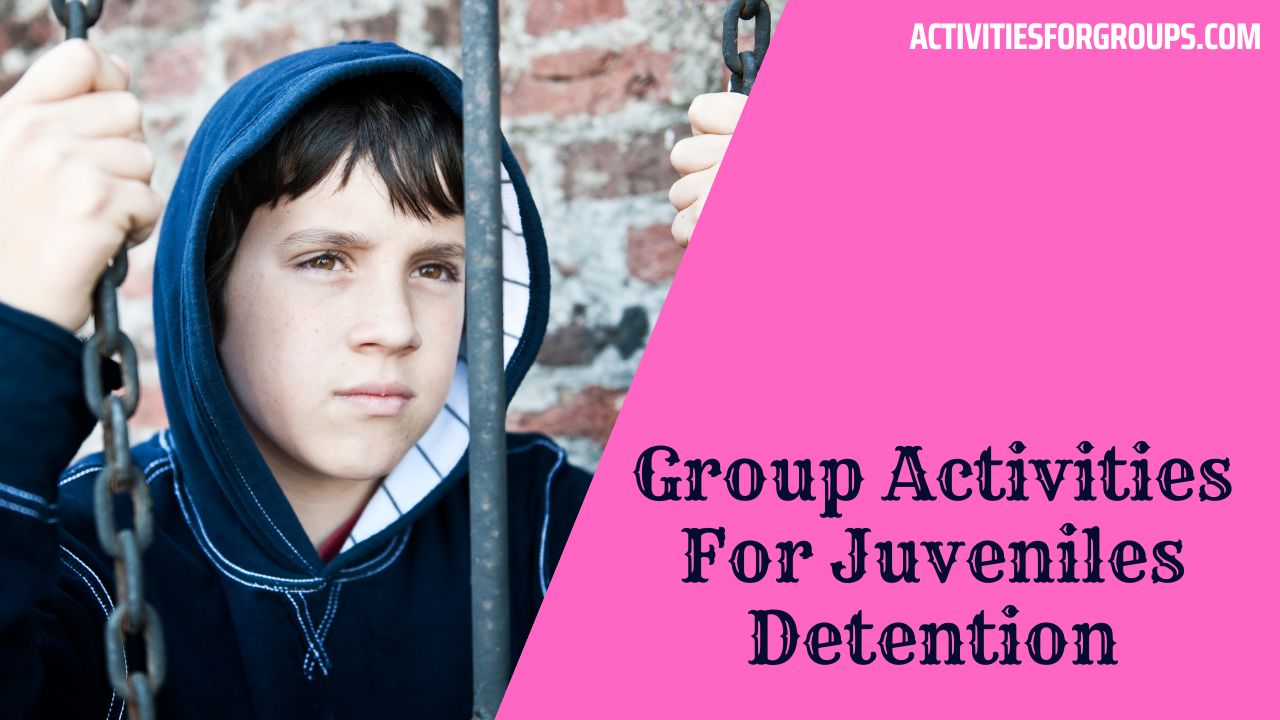Homelessness is an ongoing issue in many cities and communities around the world. As a social worker or community outreach coordinator, I’m aware of how difficult it can be for homeless adults to find meaningful activities that provide structure, support, and connection.
That’s why I believe investing in group activities specifically tailored to this population can help alleviate some of the struggles associated with homelessness.

The goal of these activities is not just to help individuals pass time and stay occupied – they should also create opportunities for learning new skills, developing relationships with others facing similar challenges, and ultimately feeling empowered.
By providing a supportive environment where every individual feels valued and respected, we can ensure each person has access to the resources they need to reach their full potential.
In this article, we’ll discuss various types of group activities suitable for homeless adults as well as strategies for helping them engage fully in those experiences.
We’ll explore how such activities can benefit both individuals experiencing homelessness as well as the wider society by encouraging self-sufficiency and reducing reliance on government assistance programs.
Also Read: Engaging Group Activities Ideas To Support Eating Disorder Recovery.
10 Fun Group Activities Ideas for Homeless Adults
| Activity | Preparation | Fun Level |
|---|---|---|
| Community Clean-Up | Plan out a location, provide cleaning supplies and safety gear. | Medium |
| Game Night | Provide board games or card games. | Medium to High |
| Movie Night | Select a movie and provide snacks. | Medium to High |
| Art Therapy | Provide art supplies and hire an art therapist. | High |
| Music Therapy | Hire a music therapist or bring in musical instruments. | High |
| Cooking Class | Provide ingredients, cooking equipment, and a chef. | High |
| Gardening Class | Provide gardening tools and plants. | High |
| Job Skills Training | Hire a job skills instructor or provide resources for job training. | High |
| Fitness Class | Hire a fitness instructor or provide resources for fitness training. | High |
| Group Therapy Session | Hire a licensed therapist or mental health professional. | High |
Benefits Of Group Activities For Homeless Adults

Group activities for homeless adults provide many benefits. These activities can improve the quality of life, mental health, and well-being of those experiencing homelessness. Participating in group activities also helps to reduce social isolation and increase community engagement among homeless adults.
The positive effects of group activity sessions often extend beyond the immediate outcomes as they may lead to long-term impacts such as improved self-esteem, a greater sense of belonging, and increased access to resources.
The physical benefits that come from participating in group activities are also noteworthy. Engaging in these types of activities increases physical fitness levels which can help combat chronic illnesses associated with homelessness such as heart disease and diabetes.
In addition, the camaraderie built between participants during activity sessions can create a safe environment where individuals feel more comfortable talking about their experiences and sharing ideas on how to find housing or employment opportunities.
Finally, research has shown that engaging in regular group activities leads to an overall improvement in the quality of life for homeless adults while providing them with vital skills necessary for successful integration into society when they eventually transition out of homelessness.
As such, it is important to ensure that all members have access to meaningful and enjoyable activities so they can reap the full range of benefits available through participation. Transitioning now into discussing the various types of group activities available…
Types Of Group Activities
Working with homeless adults can be a rewarding experience. It is important to provide meaningful activities that engage participants in positive and productive ways. There are many types of group activities suitable for this population, such as team-building exercises, arts-and-crafts projects, outdoor games, cooking lessons, and job skills training.
Team-building activities help foster communication and collaboration between individuals by encouraging them to work together towards common goals.
Arts and crafts promote creativity while also providing an outlet for self-expression.
Outdoor games offer physical activity as well as social interaction with other participants. Cooking lessons teach basic nutrition education and give people the opportunity to practice kitchen safety techniques.
Job skills training helps develop résumés, cover letters, interviewing strategies, and career exploration resources.
These activities are designed to benefit homeless adults in multiple aspects of their lives; they not only allow them to build confidence but also create connections with others experiencing similar situations who understand each other’s struggles and successes on a personal level.
With these considerations in mind, it’s time to discuss location and funding considerations for hosting group activities…
Location And Funding Considerations

Organizing activities for homeless adults requires careful consideration of location and funding. Homeless shelters can be a great starting point, as they often have activity spaces available free of charge.
Churches or other community centers may also provide low-cost venues. Additionally, there are several potential sources of funding to cover the costs associated with group activities.
- Donations from individuals, businesses, and organizations: Leverage existing relationships in your network to gather donations for materials and supplies used during activity sessions.
- Grant writing: Research grants related to homelessness services and write grant proposals to secure additional funds.
- Fundraising events: Organize fundraising opportunities such as bake sales or car washes to raise money for activity expenses.
- Sponsorships: Reach out to local companies that could potentially sponsor an event or series of activities dedicated to serving the homeless population.
- Government initiatives: Look into government programs that offer financial assistance specifically directed towards helping homeless communities access resources like educational courses or recreational activities.
These avenues open up many possibilities when it comes to acquiring financing for these activities and securing appropriate locations. With this in mind, preparing for each session is essential for providing quality programming experiences for all participants involved.
How To Prepare For An Activity Session?
Preparing for an activity session with homeless adults requires thoughtful planning and consideration. For example, it’s important to consider the group size when selecting activities, as well as to research any funding considerations that may be necessary in order to carry out the activity. Additionally, resources like volunteers or transportation need to be secured prior to beginning a session.
When preparing for the activity itself, it’s beneficial to focus on what skills and knowledge can be gained from participating. It’s helpful to create objectives that will help guide participants toward achieving those goals.
Making sure all materials needed are available is also key during the preparation of the session; this could include supplies required for certain art projects or items such as sports equipment for outdoor activities.
In addition, it’s essential to ensure that all members feel comfortable engaging with one another throughout the duration of the session. This level of comfort can be achieved by providing enough seating so everyone has a place if they want one, introducing yourself and each other at the start of the gathering, and encouraging participants to ask questions about anything related to the activity.
These tips should set up facilitators for success when leading an activity session with homeless adults. With proper preparation and thought put into how each element of the gathering comes together, these sessions provide invaluable experiences both socially and educationally which ultimately benefit those who participate in them.
Facilitating The Activity Session

When facilitating an activity session for homeless adults, it is essential to consider the specific needs of the group. As a facilitator, there are tips and strategies you can use to ensure that your activity session runs smoothly and effectively engages the audience.
First, take time to prepare beforehand. Research activities that have been successful in similar groups, review materials needed for the activity and check if any additional equipment or supplies must be provided. This preparation will help create a positive experience during the activity session as well as foster engagement among the participants.
Second, when introducing an activity it is important to provide clear instructions and set expectations. Have all necessary material ready before starting and make sure everyone understands what they need to do prior to beginning the task.
Make sure each participant has everything they need so no one feels left out or overwhelmed by their assigned tasks. Additionally, explain why this particular activity was chosen for this particular group – how does it relate to homelessness? Showing relevance helps capture interest from those attending.
Finally, remaining flexible with the timeframe and content of your activity may also help keep people engaged throughout its entirety. If things don’t go according to plan or someone finishes their task early, suggest alternative activities or allow them to explore other topics related to homelessness on their own initiative. Keeping things fluid ensures that everyone remains interested until the end of the session without feeling rushed or bored due to repetition.
As we transition into discussing strategies to encourage participation in such activities amongst homeless adults, remember: Preparation is key!
Strategies To Encourage Participation
When facilitating group activities for homeless adults, it is important to consider strategies that can be used to encourage participation. This includes planning activity sessions in advance and creating an environment where everyone feels safe and comfortable.
The first step when preparing for a session is to review who will be attending the meeting. It helps if information about each person’s background or current needs is known beforehand so the activity can be tailored accordingly. Additionally, having a plan of what topics will be discussed during the activity session gives participants something tangible to focus on and look forward to.
Next, it is essential to create a welcoming atmosphere where all participants feel heard and accepted by others in attendance.
A great way to do this is by introducing ice-breakers at the start of every session which allows people to get familiar with one another and build connections within the group.
During activities, allowing individuals time to share their thoughts encourages further conversation and feedback from other members as well as provides an opportunity for personal growth.
| Ice Breakers | Group Discussion & Sharing | Fun Activities (e.g., Art Therapy) |
|---|---|---|
| Get-to-know-you questions Name games Storytelling | Open dialogue among participants Group brainstorming ideas Debrief after activities/discussion | Paint / draw pictures Create crafts Play board games |
Finally, evaluating how these strategies impact long-term outcomes amongst homeless adults should also be taken into consideration. Such assessment allows us to assess whether our efforts have been successful in not only engaging them in activities but also helping improve their overall wellbeing and quality of life over time.
Impact On Long-Term Outcomes

Homelessness has a profound impact on the lives of adults. The long-term outcomes of homelessness can be devastating, making it critical to provide activities that will have positive outcomes for homeless adults:
• Connecting individuals with support networks and social services
• Offering job training opportunities
• Promoting physical health through exercise programs
• Facilitating educational initiatives
• Encouraging creative outlets such as music or art
Providing group activities specifically tailored to aid adult homelessness is an effective way of promoting healthy lifestyle changes and encouraging personal growth. These activities give participants access to resources they may not otherwise be able to obtain while also providing a safe environment in which to participate in meaningful engagement.
Through these activities, homeless adults are empowered to take control of their circumstances by learning new skills, expanding their knowledge base, and establishing connections within their community.
When given the opportunity, many homeless individuals respond positively and excel at accomplishing goals that further their progress toward self-sufficiency.
Group activities offer much more than just practical experience; they foster a sense of belonging and provide hope for the future. Being part of a supportive network encourages participants to maintain healthier habits both mentally and physically.
As homeless adults become increasingly engaged in this process, they are better equipped to cope with life’s uncertainties while avoiding downward spirals into deeper levels of poverty or addiction.
By investing in programs designed to benefit homeless adults we can create lasting change that makes a difference in people’s lives now as well as in the years ahead.
Frequently Asked Questions [FAQs]
For your further inquiry, you may check out this section of the article. Here, we are going to answer some of the most commonly asked questions regarding Engaging Group Activities for Homeless Adults.
How Can I Get Involved In Helping With Group Activities For Homeless Adults?

Are you looking for a way to help homeless adults? Volunteering your time and skills is an excellent way to do just that. From group activities to community outreach, there are many ways you can get involved in helping those who need it most.
There are several volunteer opportunities available that provide support for individuals experiencing homelessness. This includes facilitating group activities such as bingo nights or art classes, offering resources like meals, clothing, job training, or medical assistance, and providing transportation services. All of these options require varying levels of commitment depending on the organization’s needs.
Community outreach is another great way to make a difference in the lives of homeless people. By participating in events like street clean-ups or hosting donation drives, volunteers can lend their energy and enthusiasm towards making an impactful change in the local area. Additionally, by forming relationships with shelters and advocacy groups nearby, volunteers can gain further insight into how they can best meet the needs of the population they seek to serve.
Making a real difference doesn’t have to be difficult – volunteering has never been easier! No matter what kind of involvement you choose to pursue; whether it’s through providing direct service or simply lending moral support from afar, each effort makes an important contribution towards creating positive change within our communities.
What Are Some Common Challenges Faced By Homeless Adults During Group Activities?
Group activities for homeless adults can be complicated and challenging. Working with those who are facing homelessness is no easy feat, involving difficult conversations about safety concerns as well as long-term support. It’s important to understand the specific challenges faced by this population before participating in group activities – here are some of the most common ones:
- Feeling judged or misunderstood due to their circumstances
- Anxiety related to being around strangers
- Difficulty focusing during a conversation or activity
- Limited resources or transportation issues that may limit participation
As an outreach coordinator, I have seen firsthand how these factors affect someone’s ability to participate in meaningful ways. Homelessness takes its toll on mental health and stability, making it hard for individuals to feel comfortable engaging in social settings without fear of judgment.
Moreover, many do not have access to sufficient resources such as reliable transportation which prevents them from attending regularly scheduled events. These realities make it imperative that we find creative solutions when working with this population so they can experience positive group dynamics.
It falls upon us – those looking to help -to create safe spaces where everyone feels accepted and respected regardless of their current situation. This means providing extra patience and understanding during conversations, offering alternative forms of transportation if needed, and connecting people with any supplemental services they require in order to thrive within our community while also working towards ending homelessness altogether.
How Can I Ensure The Safety Of Homeless Adults During Group Activities?

When working with homeless adults, safety is of utmost importance. Ensuring their safety during group activities can be a challenging but rewarding task. There are several steps that must be taken to ensure the safety of these vulnerable individuals while they partake in communal activities.
First, it is important to create an environment where everyone feels accepted and secure. This includes providing support for those who may have mental health issues or physical disabilities. Additionally, all participants should feel heard and respected throughout the activity.
Long-term support from staff members can help foster relationships between participants which will ultimately lead to greater feelings of security within the group as a whole.
Another way to ensure the safety of homeless adults during group activities is by having clear expectations in place before beginning any activity. Staff members should take time to explain what behavior is appropriate and how each participant should interact with one another.
Clear communication helps prevent misunderstandings, allowing homeless adults to focus on enjoying themselves without fear of disruption or danger from other group members.
Finally, it is essential that staff remain present at all times during group activities with homeless adults. Having someone there in case something goes wrong provides not only peace of mind for both the staff member and the participants, but also serves as a reminder that everyone involved cares about creating a safe space for them; this recognition allows for meaningful connections between those attending the event and builds trust amongst attendees over time.
By taking proactive measures such as setting clear expectations and fostering positive relationships among participants, we can provide a safe atmosphere for homeless adults when engaging in group activities so they can enjoy themselves without worry or hesitation.
What Are Some Potential Risks Associated With Group Activities For Homeless Adults?
When organizing group activities, it is important to consider the potential risks associated with such events. This becomes even more critical when working with a vulnerable population such as homeless adults. It’s essential to identify and address any risk factors that could lead to safety concerns.
Homelessness can create unique challenges for social workers or community outreach coordinators who are planning group activities. As homelessness often goes hand-in-hand with physical and mental health issues, there may be increased risks related to these conditions that need to be taken into account during the activity planning process. Additionally, due to their economic circumstances, homeless individuals may not have access to certain resources which could increase their vulnerability in certain situations.
Therefore, adequate long-term support should also be provided if possible so that participants feel secure before, during, and after an event. Furthermore, special attention should be given to ensure all necessary precautions are taken for the well-being of those involved throughout every step of the activity’s implementation.
By doing so we can guarantee that our efforts will yield positive results without putting anyone at risk or jeopardizing their safety in any way.
What Are Some Ways To Provide Long-Term Support For Homeless Adults After Group Activities?

Providing long-term support for homeless adults can be a difficult and complex issue. It involves understanding the needs of individuals, devising effective programs available to them, and creating sustainable solutions that will have lasting impacts.
When it comes to group activities specifically, there are several ways in which organizations can offer continued assistance after the activity is completed.
One way is to provide follow-up resources like mental health services or job placement counseling. This allows homeless adults to access the help they need during their transition into more stable housing situations.
Additionally, having ongoing mentorship opportunities with those who work directly with the homeless population ensures that participants receive personalized attention and guidance from people familiar with their unique lifestyle challenges.
Finally, providing financial aid or other forms of material assistance such as food pantries, clothing donations, and transportation vouchers helps ensure maximum impact for residents participating in group activities.
These types of services give attendees a better chance at success following the program’s completion by eliminating some of the basic barriers many faces on a daily basis due to poverty.
In order to make sure these efforts are successful over time, organizations should strive to create an environment where homeless adults feel safe and secure while also ensuring that all necessary supports continue on even after the event has ended:
- Establish partnerships between service providers so that each participant has multiple sources of assistance they can turn to if needed;
- Actively monitor progress made throughout each program’s duration so any setbacks can quickly be addressed;
- Encourage regular communication between staff members and participants for continued feedback about how things could be improved going forward.
By doing this, we can ensure that our collective efforts result in meaningful change for those living without permanent homes instead of just temporary relief from current conditions.
Conclusion
It’s important to remember that homeless adults are people too. They have their own stories, struggles, and hopes, just as we all do; they’re not something to be pitied or ignored. Group activities for homeless adults can provide a way of building community and giving them the support they need. We should strive to create safe spaces where homeless adults can come together in solidarity and engage in meaningful activities that promote growth and healing.
As social workers and community outreach coordinators, it is our responsibility to advocate on behalf of those who find themselves without homes or resources. This means providing long-term support in addition to short-term group activities so that these individuals can develop life skills and gain access to necessary services. It also involves recognizing potential risks associated with such groups, like vulnerability to physical harm or exploitation, but still striving for ways to make them beneficial experiences overall.
We must never forget what an incredible impact even small acts of kindness can have on someone who may feel completely alone in this world. Through understanding, education, and engagement, we can help restore hope into the lives of those around us – including those experiencing homelessness – by offering them opportunities for connection, growth, and transformation through group activities.




Leave a Reply